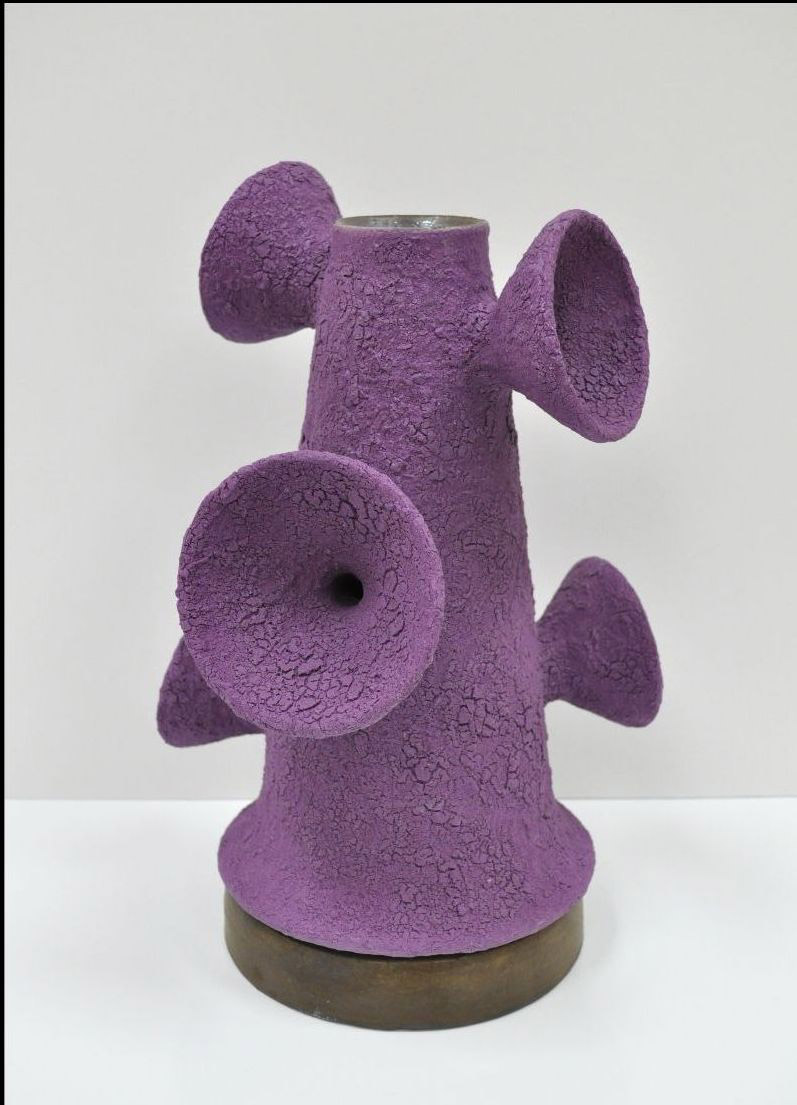

Virginia Scotchie, Object Maker Series, 2020, glazed stoneware. Asheville Art Museum. © Virginia Scotchie
Asheville, N.C.—The Asheville Art Museum presents Fantastical Forms: Ceramics as Sculptureon view at the Museum through April 5, 2021.The 25 works in this exhibition—curated by associate curator Whitney Richardson—highlight the museum’s collection of sculptural ceramics from the last two decades of the 20th century to the present. Each work illustrates the artist’s ability to push beyond the utilitarian and transition ceramics into the world of sculpture.
North and South Carolina artists featured include Elma McBride Johnson, Neil Noland, Norm Schulman, Virginia Scotchie,Cynthia Bringle,Jane Palmer,Michael Sherrill and Akira Satake. Works by American artists Don Reitz, Robert Chapman Turner, Karen Karnes, Toshiko Takaezu, Bill Griffith and Xavier Toubes are also featured in the exhibition.
“Fantastical Forms: Ceramics as Sculpture will offer visitors the chance to see a selection of large-scale ceramic works of art from the Museum’s Collection,” says Richardson. “Many of these sculptures have either not been seen for years or have never been seen before by the public. We’re excited to bring not just one, but several colorful and imaginative sculptures out to be displayed together to create their own fantasy world. Several artists in the exhibition have a student-teacher relationship, and it’s fun to see how their styles run parallel and intersect one another.”
Ceramics often serve a practical purpose and fired clay is traditionally used to make coffee mugs, plates, and vases—many of the things we use every day and have for hundreds of years. Around 1870, ceramicists began experimenting with those functional shapes to make what they called “art pottery” as a decorative addition to one’s home. After World War II more art students learned ceramics on the GI Bill; by the 1960s, artists had expanded the field even further, with some completely abandoning functionality as a prerequisite of ceramics. Those artists saw themselves as fine artists who created sculptures in clay, and eventually the art world followed suit.By the 1980s, artists who began the movement in the mid-century were well established and teaching the next generation of sculptural ceramicists.Many of their students went on to create fantastical and imaginative forms, both abstract and figurative.
This new exhibition is also complimented by Muddying the Waters: Exploring Traditions in North Carolina Clay on view through Feb. 1, 2020which explores the movements and connections of makers as a way to push boundaries of regionality and tradition while highlighting the richness and complexity of makers and practices around North Carolina.The museum also hopes this exhibition will encourage visitors to explore the SECU Collection Hall and discover other sculptural ceramic works of art.
The museum’s galleries, the museum store, and Perspective Café are open with limited capacity. ArtPLAYce, the intergenerational makerspace, and the Frances Mulhall Achilles Art Research Library remain temporarily closed. The museum welcomes visitors Wednesday through Monday from 11a.m. to 6 p.m., with late-night Thursdays from 11 a.m. to 9 p.m. The museum is closed on Tuesdays. General admission is always free for Museum Members, UNC Asheville students, and children under 6; $15 per adult; $13 per senior (65+); and $10 per student (child 6–17 or degree-seeking college students with valid ID). Visitors may become members at the welcome desk during their visit or online at ashevilleart.org/membership. The museum is also offering both onsite and virtual programs; a full calendar can be found at ashevilleart.org/events.